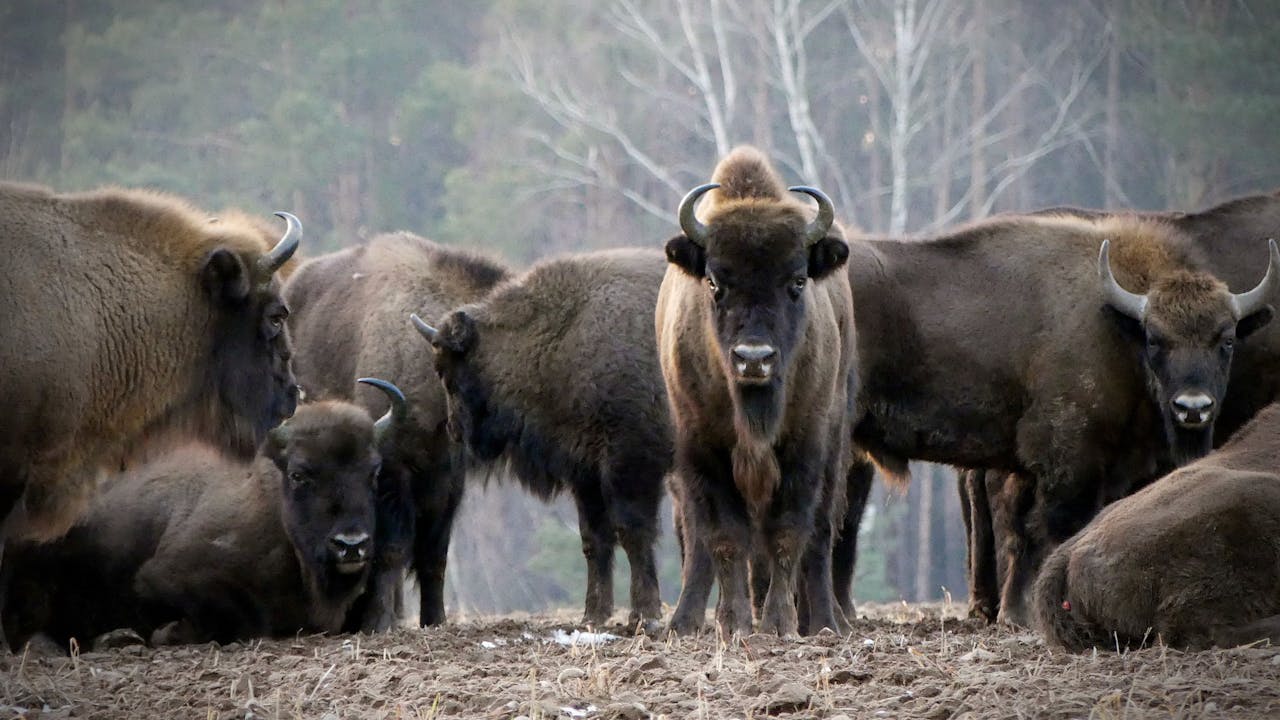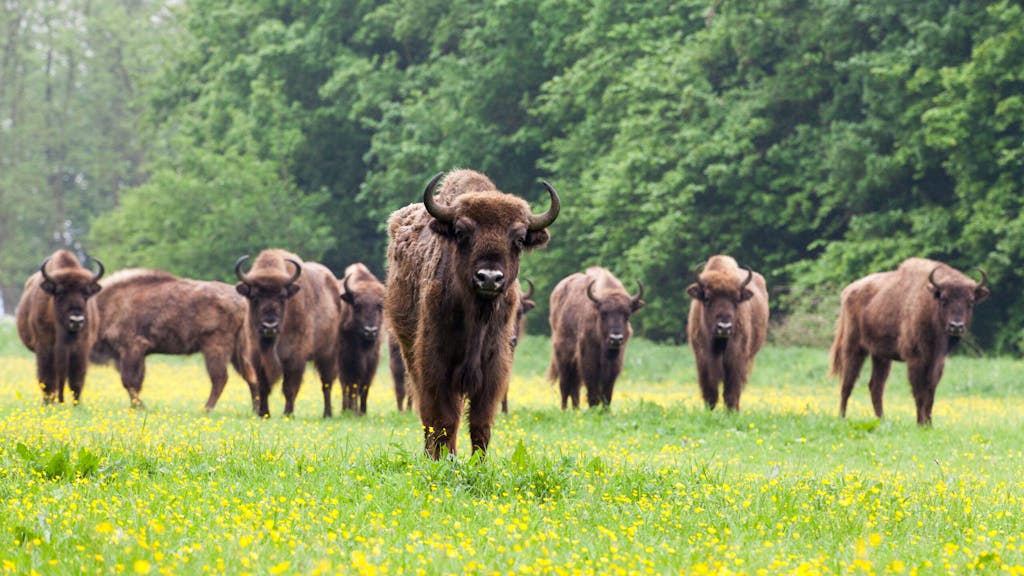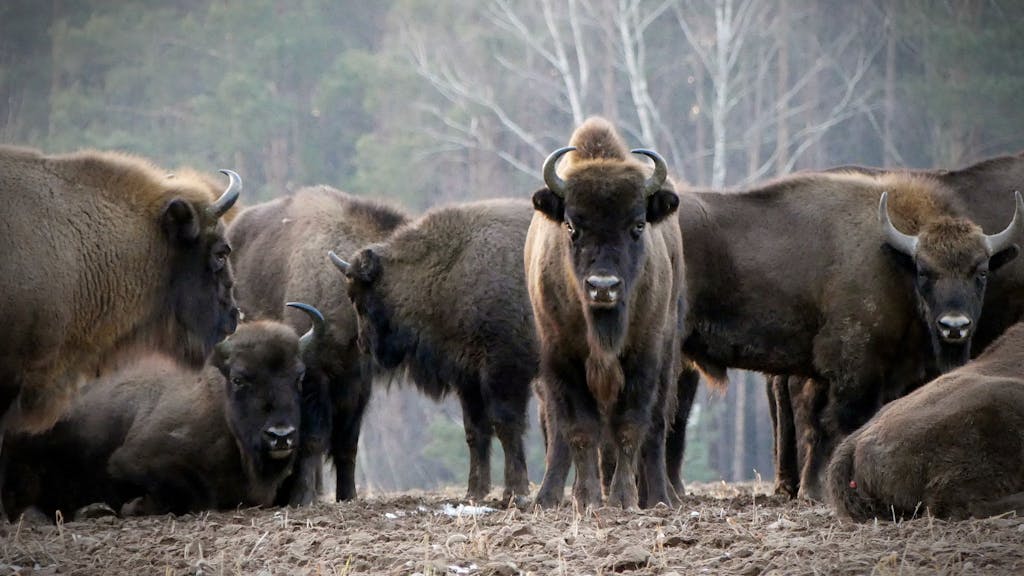European Bison
European bison, along with American bison, are the two last remaining species of bison in the world. These enormous animals are the largest living land mammals in Europe. A hundred years ago, European bison were almost extinct, but thanks to the efforts of, among others, Het Flevo-landschap, bison in Europe are now doing a lot better. With approximately 5,500 animals worldwide, the European bison is still an endangered species.
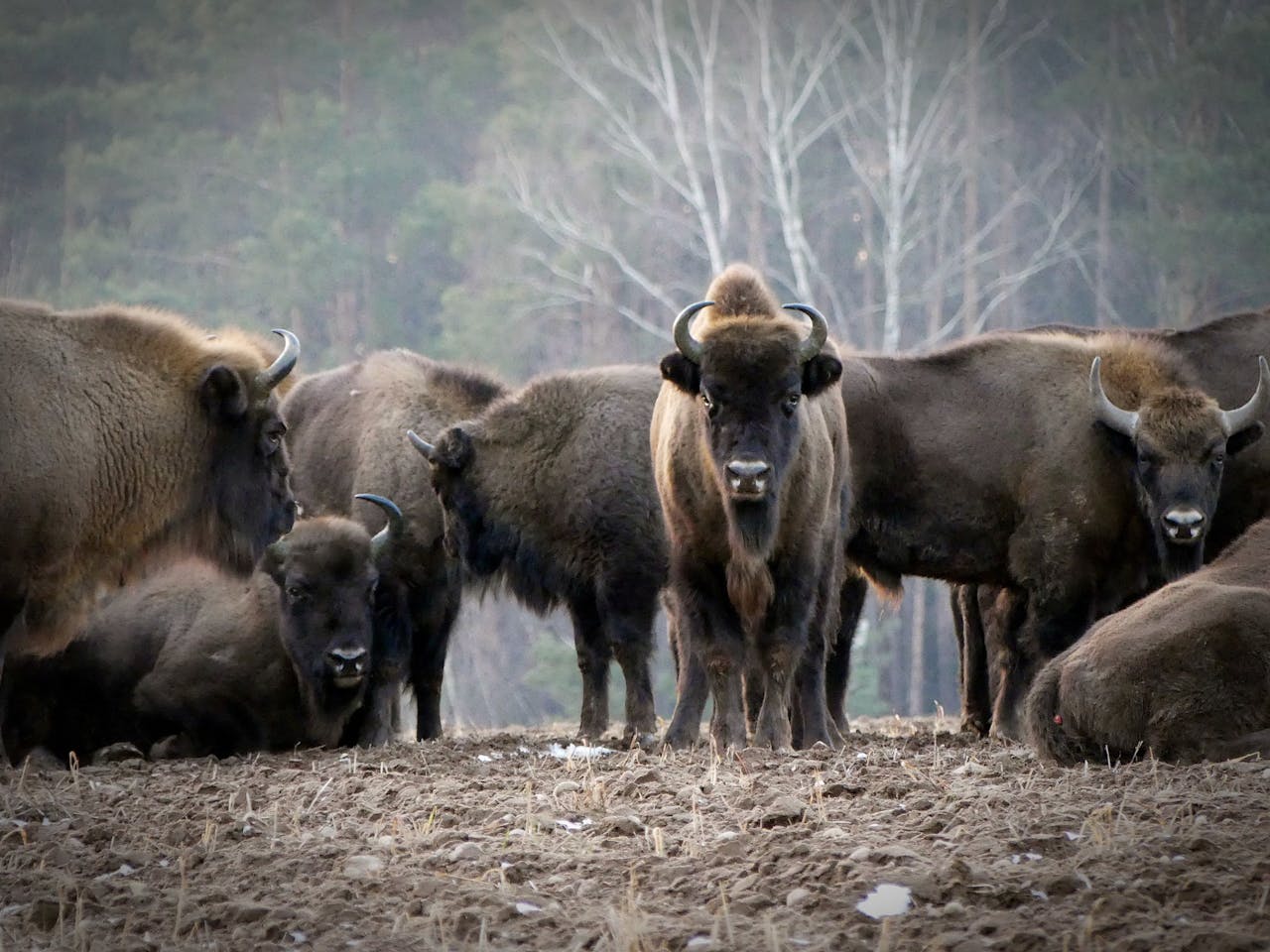
Het Flevo-landschap has been participating in a European bison breeding program for almost 50 years. In May 1975, the first bison arrived in Natuurpark Lelystad from Białowieża National Park in Poland. Lelystad became one of the breeding stations from which various reintroduction projects in the Netherlands and Europe have been supplied with bison over the years. The animals in Lelystad live in an area of almost 45 hectares, in good harmony with a group of Przewalski horses. The current herd is around 25 animals and consists of a breeding bull, 10 cows and the additions from the last two years. All animals are registered in the European Bison Studbook and belong to the genetic Lowland line (Bison bonasus bonasus). In the area, the animals have grassland as well as shrubs, forest and drinking holes at their disposal, which means that the animals can live self-sufficiently and do not need to be fed additionally.
Name: European bison Species: Bison bonansus Family: bovids Range: Western, Central and Eastern Europe Height: 2 meters Weight: max. 850 kg Diet: Herbs, grass, shrubs, bark, shoots and acorns Rutting season: August to October Horns: Males and females have horns
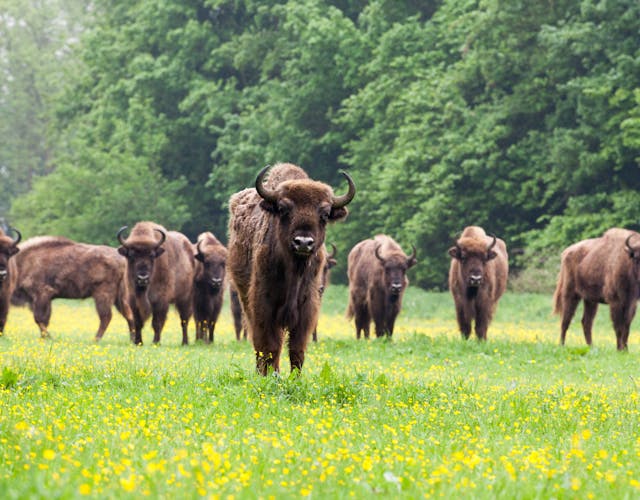
Lifestyle and diet
European bison live in herds, the size of which depends on the habitat. Where food is plentiful and there is plenty of space, the herd will be able to consist of a larger number of animals. A herd consists mainly of cows and their young, which may also be fully grown. Bulls lead a solitary life. Some young and older bulls choose to form a herd together.
The European bison in Natuurpark Lelystad like to eat grass, herbs, leaves, young shoots, bark, acorns and berries. In the autumn they eat bark from trees and shrubs and dig up roots with their forelimbs.

Flevoland bison everywhere in Europe
Between 1976 and now, more than 120 European bison from the herd in Natuurpark Lelystad have been released into dozens of nature reserves in Europe to form new herds. Our animals moved to Poland, Belarus, Latvia, Croatia, Germany, Scotland, Belgium, Spain, Denmark, Italy, France and Slovakia, among others.
Within the Netherlands, animals from the park (or their descendants) can be found in the Kraansvlak, a closed part of the Zuid-Kennemerland National Park, on the Veluwe in the Kootwijk forestry, on the Maashorst in North Brabant and on the Slikken van de Heen in Zeeland.
Thanks to an annual growth of 4 to 8 calves, Natuurpark Lelystad still boasts the largest herd of European bison in the Netherlands.

Coexistence with Exmoor ponies
The European bison in Lelystad Nature Park share their habitat with a herd of Exmoor ponies. In the past, the bison shared their enclosure with the herd of Przewalski’s horses. The cohabitation of horses and bovids is beneficial for both species and for the natural dynamics of the area. For example, bison and horses eat different foods. Horses primarily eat grass and herbs, while bison also eat leaves and tree bark. This creates open spaces in the area. Both species create sandy pits in the area, which in turn is beneficial for various insect species.
